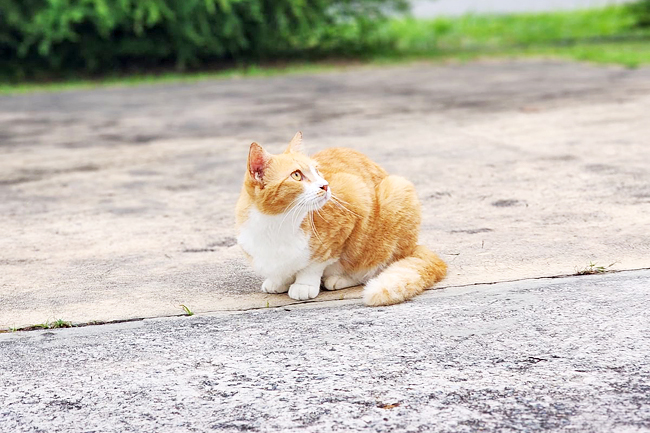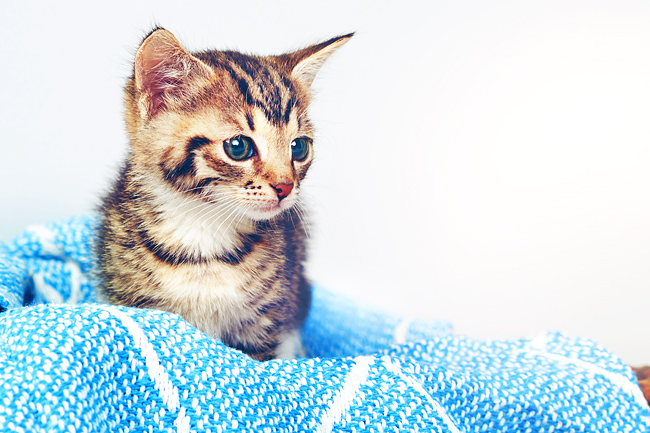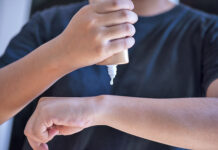About a month ago, while heading out for lunch with my colleague, Wardi, something unexpected happened that’s stuck with me ever since. We’d just left the office and were about to turn onto a busy road when I spotted a tiny kitten stranded in the middle of the street.
It must have fallen from a moving vehicle – unfortunately, not uncommon for kittens that small.
The road was quickly filling up with cars zooming by, and my heart raced as I realised the danger the little creature was in. Without thinking, I hit the brakes, stopping right in front of it, terrified I might accidentally run it over.
Before I could even process what to do next, Wardi was out of the car, moving swiftly to scoop the kitten up from harm’s way. His quick thinking saved the day, and the kitten’s life.
In short, I decided the best course of action was to send the kitten to my house, where my sister could look after her while I finished up at work. The moment my sister laid eyes on the tiny feline, she was completely smitten.
Without hesitation, she named her Pumpkin, and from that moment on, Pumpkin became an instant favourite in our household.




We reckoned Pumpkin was about five or six weeks old, judging by her eyes, which were still a soft, pale shade of blue, which meant that she hasn’t fully weaned off milk yet. So off my sister went to buy some milk for the little kitty.
So, what kind of milk should you give a stray kitten if you happen to find one? It’s a common question, and knowing the right answer is crucial for their health. Here’s what you need to know.
KITTEN MILK REPLACER
Kittens under four weeks of age are too young to eat solid food, whether dry or canned, and instead rely on their mother’s milk for essential nutrients. However, if you find yourself caring for a stray kitten without its mother, you’ll need to step in and provide the nourishment they need to survive.
The best option for feeding a newborn kitten is a specially formulated nutritional substitute known as kitten milk replacer, which you can usually find at your local pet store, though I have encountered some that only sell liquid kitten milk replacers.
It’s important to avoid giving them regular cow’s milk, as it can make them quite ill. If you’re unsure which kitten milk replacer is best, a quick chat with a vet can point you in the right direction.
Most dry milk replacers don’t require refrigeration, but if you prepare extra milk, be sure to store it in the fridge to keep it fresh.
When it comes to feeding, the process is simple: first, prepare the formula by warming it to just above room temperature.
Before feeding, always test the temperature by placing a few drops on your wrist to ensure it’s not too hot for the little one.
Keeping everything clean and sanitary is crucial when feeding a kitten. Before and after each feeding, make sure to wash your hands thoroughly, as well as the bottle you’re using.
A little trick to minimise germs is to wear a “kitten gown” – a dedicated shirt or robe you only wear when handling your kitten. This way, you can help reduce the spread of germs and keep your furry friend safe.
When it’s time to feed, handle your kitten with gentle care. Position them on their stomach, lying next to you, much like they would if nursing from their mother. Wrapping them in a warm towel can offer extra comfort as they sit on your lap. Find a position that feels natural and cosy for both of you.
Hold the bottle of formula close to their mouth, but let the kitten lead. Allow them to suckle at their own pace.
If they seem hesitant, try gently stroking their forehead – this mimics the way a mother cat would groom them, encouraging them to eat.
Feeding should be done every three hours, around the clock. Yes, even during the night! Many people find it helpful to set an alarm so they don’t miss a feeding.
Remember, it’s essential to keep the feeding consistent – skipping or overfeeding could lead to diarrhoea or dehydration, which can be quite dangerous for kittens.
Once they’ve finished eating, it’s time to burp them – yes, just like babies! Lay your kitten on their stomach and softly pat their back until you hear a little burp. You may need to do this a few times throughout each feeding session.
And if your kitten refuses to eat or you’re unsure about anything, it’s always best to contact your vet right away.
Luckily for us, Pumpkin was just old enough to lap up her milk from a tiny bowl, saving us the challenge of bottle feeding.
It was a relief, as the process of warming formula and keeping to a strict feeding schedule can be quite the task.
Pumpkin took to her little bowl with ease, her tiny paws resting on the edge as she eagerly drank, a sight that melted our hearts each time. She has grown into quite the little rascal these days, terrorising our other cats. – Izah Azahari



















































